Welcome to Trinetram.
1. Introduction

Yoga is not just a physical exercise but a sacred journey toward health, inner peace, and spiritual awakening. The word ‘Yoga’ originates from the Sanskrit root ‘Yuj,’ which means ‘to unite’ or ‘to join’ — symbolizing the union of the individual self with the universal consciousness. Rooted in ancient Indian philosophy, the word Yoga means union — of the body, mind, and soul with the divine.
“योगश्चित्तवृत्तिनिरोधः।” Yogaś Citta Vṛtti Nirodhaḥ, (Patanjali Yoga Sutra, 1.2). Means “Yoga is the cessation of the fluctuations of the mind.”
2. Types of Yoga
Ancient texts describe various forms of yoga suited to different temperaments and life goals. Each type serves both physical health and spiritual growth.
a. Hatha Yoga – The Path of Physical Mastery
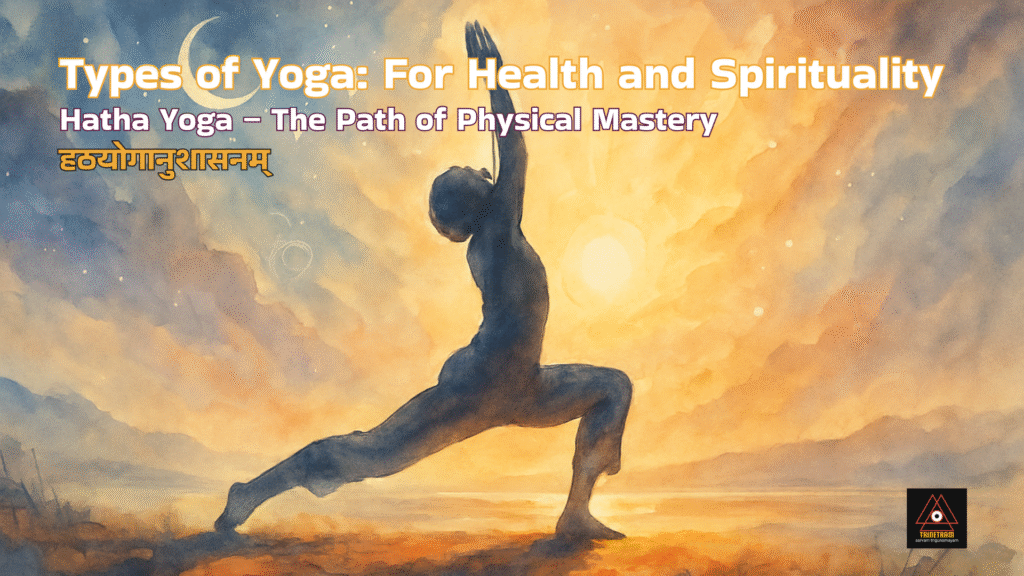
Hatha Yoga emphasizes physical postures (asanas), breath control (pranayama), and cleansing techniques (shatkarmas), Mudrākāraṇa (Purpose of the Mudra) and Nāda Anusandhāna (Inner Sound Meditation) to prepare the body and mind for higher practices.
“हठयोगानुशासनम्।” Haṭhayogānuśāsanam (Hatha Yoga Pradipika, 1.1). Means “Instruction on the discipline of Hatha Yoga.”
b. Bhakti Yoga – The Path of Devotion
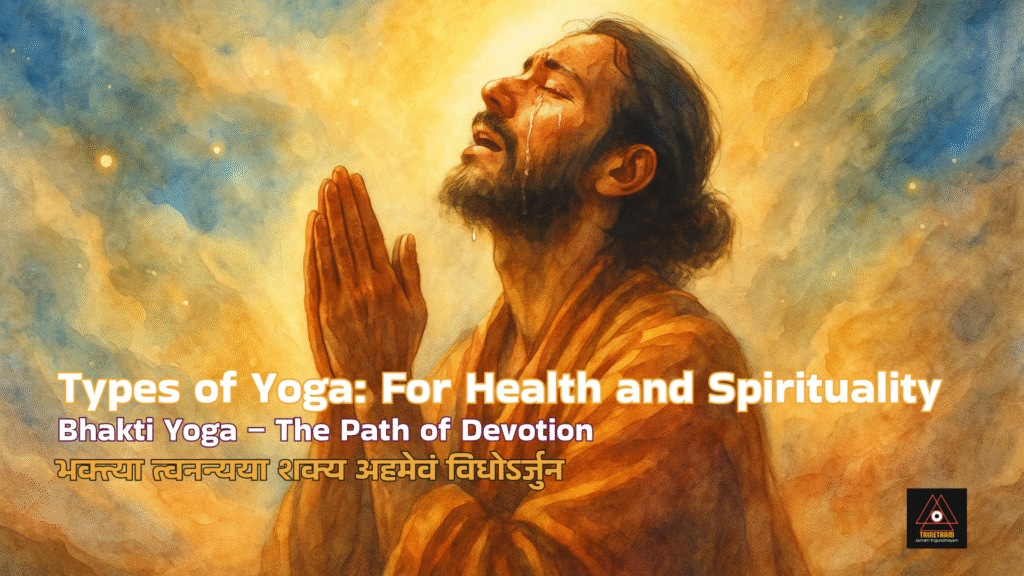
Bhakti Yoga cultivates love and surrender to the divine through prayer, chanting, and rituals, fostering emotional purification and spiritual connection.
“भक्त्या त्वनन्यया शक्य अहमेवं विधोऽर्जुन।” Bhaktyā Tvananyayā Śakya Aham Evaṁ Vidho ’rjuna (Bhagavad Gita, 11.54). Means “Only through undivided devotion can I be truly known, O Arjuna.”
c. Karma Yoga – The Path of Selfless Action
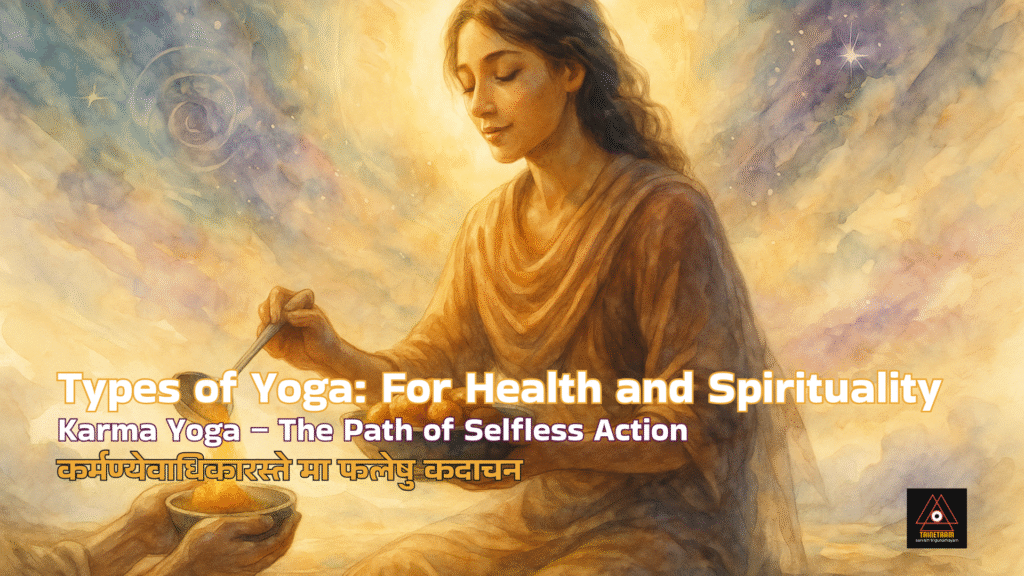
Karma Yoga teaches performing duties and actions selflessly, without attachment to results, purifying the ego and fostering humility.
“कर्मण्येवाधिकारस्ते मा फलेषु कदाचन।” Karmaṇy-evādhikāras te mā phaleṣu kadācana (Bhagavad Gita, 2.47). Means “You have a right to perform your duty, but not to the fruits thereof.”
d. Jnana Yoga – The Path of Knowledge
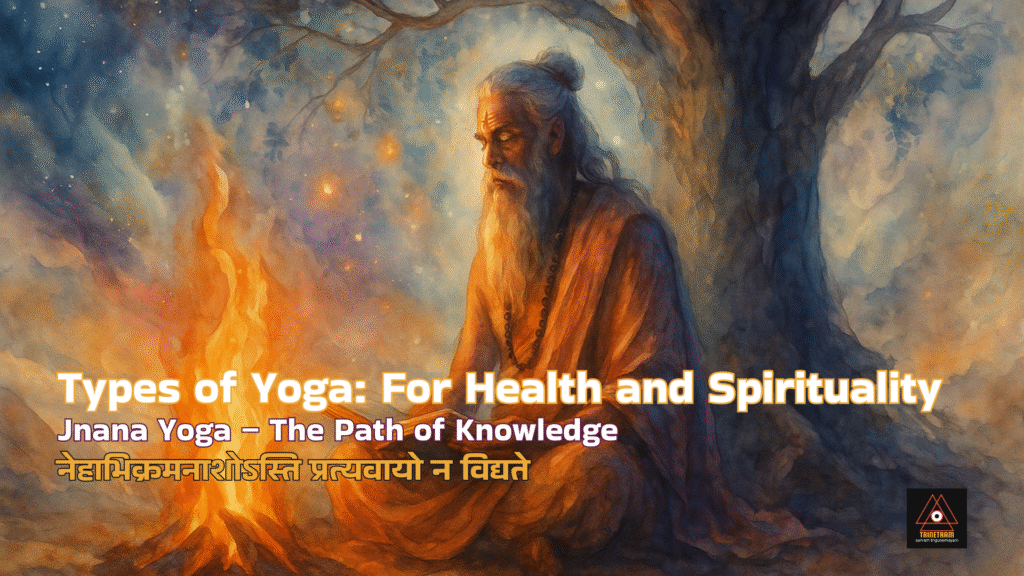
Jnana Yoga focuses on intellectual inquiry and the realization of the Self (Atman) through study, contemplation, and self-inquiry (vichara).
“नेहाभिक्रमनाशोऽस्ति प्रत्यवायो न विद्यते।” Nehābhikramanāśo’sti Pratyavāyo Na Vidyate (Bhagavad Gita, 2.40). Means “In this path, no effort is ever lost, nor are there adverse effects.”.
e. Raja Yoga – The Path of Meditation
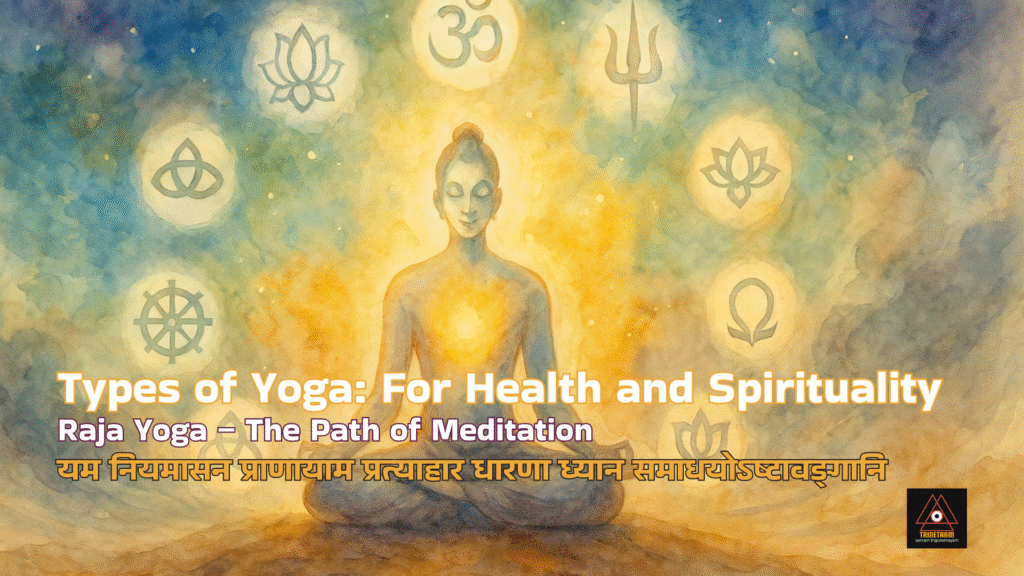
Raja Yoga, or the Royal Path, incorporates Patanjali’s Ashtanga (eight-limbed) system, focusing on mental discipline, meditation, and ultimately union with the divine.
“यम नियमासन प्राणायाम प्रत्याहार धारणा ध्यान समाधयोऽष्टावङ्गानि।” Yama Niyama Āsana Prāṇāyāma Pratyāhāra Dhāraṇā Dhyāna Samādhayo’ṣṭāvaṅgāni (Patanjali Yoga Sutra, 2.29) Means “Yama, Niyama, Asana, Pranayama, Pratyahara, Dharana, Dhyana, and Samadhi are the eight limbs of yoga.”
f. Kriya Yoga – The Path of Energy and Breath

Kriya Yoga utilizes breath control (pranayama), mantra, and meditation to accelerate spiritual progress by purifying the nervous system and awakening inner energy.
“तपःस्वाध्यायेश्वरप्रणिधानानि क्रियायोगः।” Tapaḥsvādhyāyeśvarapraṇidhānāni Kriyāyogaḥ (Patanjali Yoga Sutra, 2.1) Means “Kriya Yoga consists of discipline, self-study, and surrender to God.”
3. Ancient Practices in Different Cultures

Yoga evolved alongside other sacred traditions:
- Taoist Practices in China emphasized energy flow and internal alchemy.
- Sufi Meditation focused on remembrance (dhikr) and inward devotion.
- Christian Mysticism used contemplative prayer and fasting for divine union.
“ध्यानमूलं गुरोर्मूर्ति।” Dhyānamūlaṁ Gurormūrtiḥ (Guru Gita, Verse 39). Means “Meditation begins with the image of the Guru.”
4. How to Practice in Modern Life

Yoga can be customized for today’s busy lifestyles:
- Start with 15–40 minutes daily.
- Choose a path that resonates: physical (Hatha), meditative (Raja), or devotional (Bhakti).
- Use online classes, apps, or spiritual mentors for guidance.
“युक्ताहारविहारस्य युक्तचेष्टस्य कर्मसु।” Yuktāhāra-vihārasya Yuktaceṣṭasya Karmasu (Bhagavad Gita, 6.17). Means “One who is moderate in eating, recreation, work, and sleep attains yoga.”.
5. Misconceptions About Yoga

- Myth: Yoga is only about flexibility.
- Truth: It’s a path to spiritual transformation.
- Truth: It’s a path to spiritual transformation.
- Myth: One must renounce everything.
- Truth: Yoga fits every lifestyle, even for householders.
- Truth: Yoga fits every lifestyle, even for householders.
- Myth: It belongs to only one religion.
- Truth: Yoga is universal.
- Truth: Yoga is universal.
“न हि कश्चित्क्षणमपि जातु तिष्ठत्यकर्मकृत्।” Na Hi Kaścit Kṣaṇam Api Jātu Tiṣṭhaty Akarmakṛt (Bhagavad Gita, 3.5). Means “No one can remain even for a moment without action.”
6. Conclusion
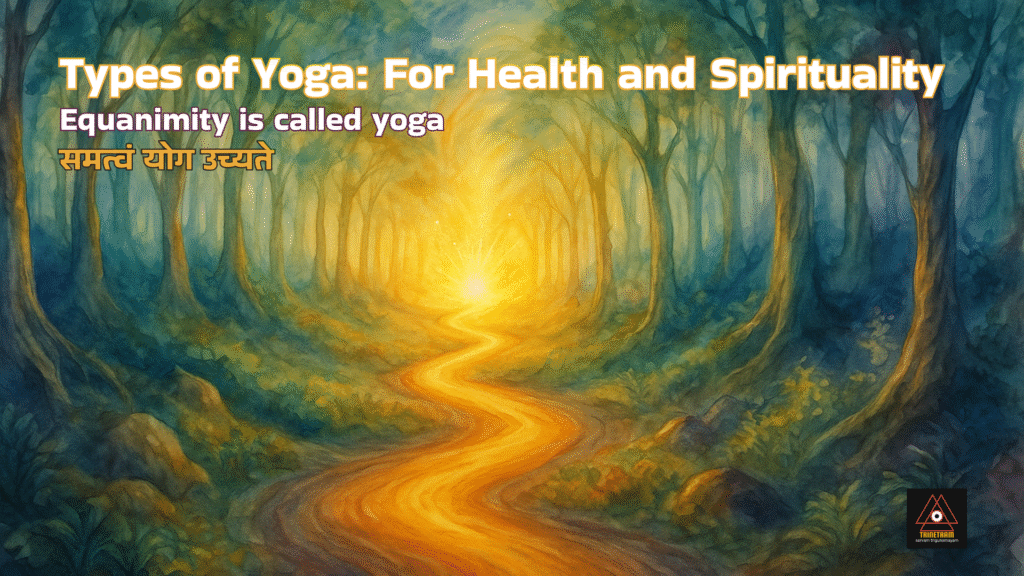
Yoga is a multi-dimensional path for physical well-being and spiritual realisation. Whether through devotion, wisdom, service, or discipline, yoga offers a method for every seeker.
“समत्वं योग उच्यते।” Samatvaṁ Yoga Ucyate (Bhagavad Gita, 2.48). Means “Equanimity is called yoga.”
We will explore each type of Yoga in our upcoming blog. Until then, stay tuned to trinetramyc.com! 🌈
We would love to hear your valuable thoughts and insights to help us deepen this exploration.
Thank you,
Team Trinetram 🙏

Leave a Reply